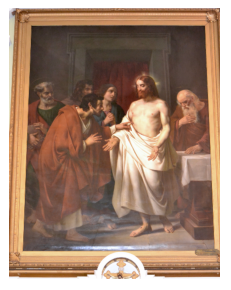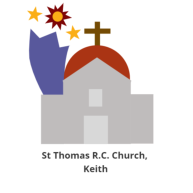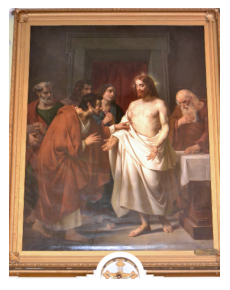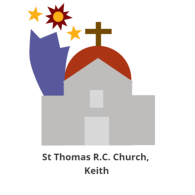
© Lorem ipsum dolor sit Nulla in mollit pariatur in, est ut dolor eu eiusmod lorem 2013
Also
in
Edinburgh
at
this
time
was
Father
(who
was
to
be
later,
Bishop)
Gillis,
who
had
very
strong
links
with
the
French
Royal
family.
It
could
be
thought
that
introductions
were
made,
since
Father
Lovi,
while
in
Paris,
approached
Charles
X
for
a
contribution
to
his
proposed
new
church.
Charles
gave
money,
and
commissioned
François
Dubois,
a
very
successful,
well-known
painter,
to
provide
an
altar-piece.
The
subject
of
the
painting
was
to
be
“The
Incredulity
of
Saint
Thomas”
and
it
was
painted
around
1828.
Unfortunately,
this
occurred
at
the
same
time
as
Charles
X
being
disposed
in
1830.
The
painting
was
then
“lost”.
Despite
the
efforts
of
the
British
Ambassador
in
Paris
to
find
the
painting,
it
remained
undiscovered.
Charles
X
had
been
exiled
and
he
returned
to
Holyrood
Palace
in
Edinburgh.
Undeterred,
Father
Lovi
travelled
to
Paris,
where
just
after
Chritmas
1830
he
traced
the
painting
to
The
Louvre,
and
he
returned
with
it
to
Keith
before
the
opening
of
his
new
church.
The
back
of
the
painting
still
bears
what
is
thought
to
be
Charles’
monogram,
firmly
stamped
on
the
reverse
of
the
canvas,
while
on
the
front
there
is
a
brass
plate,
bearing
the
inscription,
"Carolus
X,
Rex
Gallorum
Christainissimus
dona
dedit
AD
1828"
("Charles
X,
most
Christian
King
of
France,
gave
this, AD 1828").
History of St Thomas Church - Part Two




© Lorem ipsum dolor sit Nulla in mollit pariatur in, est ut dolor
eu eiusmod lorem 2013
History of
St Thomas Church Part Two
Also
in
Edinburgh
at
this
time
was
Father
(who
was
to
be
later,
Bishop)
Gillis,
who
had
very
strong
links
with
the
French
Royal
family.
It
could
be
thought
that
introductions
were
made,
since
Father
Lovi,
while
in
Paris,
approached
Charles
X
for
a
contribution
to
his
proposed
new
church.
Charles
gave
money,
and
commissioned
François
Dubois,
a
very
successful,
well-
known
painter,
to
provide
an
altar-piece.
The
subject
of
the
painting
was
to
be
“The
Incredulity
of
Saint
Thomas”
and
it
was
painted around 1828.
Unfortunately,
this
occurred
at
the
same
time
as
Charles
X
being
disposed
in
1830.
The
painting
was
then
“lost”.
Despite
the
efforts
of
the
British
Ambassador
in
Paris
to
find
the
painting,
it
remained
undiscovered.
Charles
X
had
been
exiled
and he returned to Holyrood Palace in Edinburgh. Undeterred,
Father
Lovi
travelled
to
Paris,
where
just
after
Chritmas
1830
he
traced
the
painting
to
The
Louvre,
and
he
returned
with
it
to
Keith
before
the
opening
of
his
new
church.
The
back
of
the
painting
still
bears
what
is
thought
to
be
Charles’
monogram,
firmly
stamped
on
the
reverse
of
the
canvas,
while
on
the
front
there
is
a
brass
plate,
bearing
the
inscription,
"Carolus
X,
Rex
Gallorum
Christainissimus
dona
dedit
AD
1828"
("Charles
X,
most Christian King of France, gave this, AD 1828").
























